
Lithium-ion (Li-ion) cells provide one of the most important energy storages today. These cells are used in many electronic items including smartphones, laptops, personal portable equipment, cameras, etc. In fact, Li-ion cells have paved the way for efficient and long ranged electromobility, thus making electrical vehicles (EVs) practical for our daily commute.
Li-ion cells are secondary cells or, in other words, rechargeable cells, that is, they can be recharged by passing current in the reverse direction. Li-ion batteries are lightweight and have higher energy density than other types of rechargeable cells, thus making them suitable for energy-intensive applications where constant replenishment of energy is essential, such as in our daily electronics gadgets, EVs, home energy storage system. These are used even in applications where a large amount of energy is stored, such as grid energy storage application.
This article describes the six most common Li-ion chemistries and the advantages as well as disadvantages of each type of cell, along with their properties.
Like many other commonly available cells, Li-ion cells are made up of four components— cathode, anode, electrolyte, and separator. Li-ion cells commonly use graphite at anode and an intercalated lithium compound at cathode. The capacity and voltage of a Li-ion cell is dependent on the cathode while the charge and discharge rate of a battery depends on the anode. The amount of lithium and the active material in the cathode dictates the battery capacity and voltage while the potential difference between the anode and the cathode determines the voltage of a battery.
This story is from the September 2022 edition of Electronics For You.
Start your 7-day Magzter GOLD free trial to access thousands of curated premium stories, and 9,000+ magazines and newspapers.
Already a subscriber ? Sign In
This story is from the September 2022 edition of Electronics For You.
Start your 7-day Magzter GOLD free trial to access thousands of curated premium stories, and 9,000+ magazines and newspapers.
Already a subscriber? Sign In

ESP32-Powered AUDIO-VISUAL SIREN
This sound alternator is designed to simulate the effects of a police siren, combining sound and light to create a dynamic audio-visual experience.
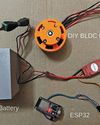
BLDC MOTOR With Web-Based Speed Control Using ESP32
Integrating wireless control into brushless direct current (BLDC) motor systems opens up exciting possibilities for applications such as remote-controlled cars, robots, and other innovative systems.
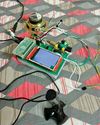
Pi Zero Portable BILINGUAL TRANSLATOR
This system is designed as a bilingual translator, leveraging the gTTS library to support multiple Indian languages, including English (en), Bengali (bn), Gujarati (gu), Hindi (hi), Kannada (kn), Malayalam (ml), Marathi (mr), Tamil (ta), Telugu (te), and Urdu (ur).
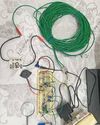
Op-Amp-Based VEHICLE THEFT DETECTOR
A simple, low-cost device can effectively alert homeowners or occupants if a parked vehicle is moved or tampered with.

loT SMART METER With Dashboard
Energy meters in homes track electricity usage, enabling accurate billing by governments and providers.

Choose The Right Cloud Platform For Implementing loT PROTOCOLS
Working with loT protocols like MQTT, AMQP, and CoAP on cloud platforms is essential for developing scalable and efficient lol applications. The choice of the programming platform will depend on factors like project requirements, existing skills, and target devices. Leveraging the appropriate libraries and cloud services can enable seamless integration of lol devices with cloud-based applications.

Why TMR SENSORS Lead Next-Generation Design
TMR sensors are gaining traction in industries needing precision and power efficiency. What makes them the go-to choice for modern designs?
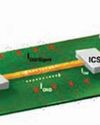
DESIGNING PCBs For EMI Management
Electromagnetic interference can derail your PCB’s performance. EMI management is not just a technical necessity but a hallmark of exceptional PCB design.

CUTTING COSTS, NOT CORNERS: Building Large Scale Applications With Open Source Software
Here are some strategies and best practices for leveraging open source to create enterprise-grade web and mobile applications without sacrificing quality or functionality.
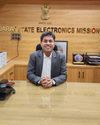
"We Are One Of India's Very Few State Bodies To Manage The Entire Lifecycle Of The Electronics EcosystemFrom Approvals To Subsidies."
What is Gujarat State Electronics Mission GSEM), and how is it attracting major investments in electronics manufacturing, particularly semiconductor manufacturing, to Gujarat? To delve deeper, Electronics For You’s Nijhum Rudra spoke with Manish Gurwani, the head of GSEM. Here is what he revealed...